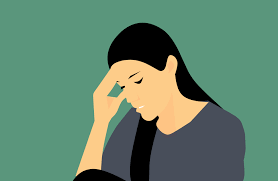Post-traumatic stress disorder, or PTSD, often develops after someone experiences or witnesses a traumatic event. While many people associate it with flashbacks and hypervigilance, the condition can also affect mood and thinking. Depression is one of the most common co-occurring conditions in individuals with PTSD. The two share several symptoms and may influence one another in ways that complicate diagnosis and treatment. Understanding their connection is an key part of delivering appropriate, long-term care. Without clear recognition of how these conditions interact, many individuals may go without the right kind of help.
PTSD and depression both involve persistent negative thoughts, disrupted sleep, and feelings of detachment. People living with PTSD may experience intense guilt, loss of interest, or hopelessness—hallmarks of depressive disorders. These overlapping symptoms can mask one condition or make it harder to identify both. Physical effects, such as fatigue or appetite changes, may also appear in either diagnosis. As the conditions compound, individuals often feel emotionally exhausted and unable to manage daily responsibilities. This overlap may cause delays in treatment or lead to incomplete care plans if only one condition is identified.
Knowing How PTSD May Lead to Depression
Exposure to trauma can change how the brain processes stress, which may increase a person’s vulnerability to depression. If symptoms of PTSD continue unchecked, the emotional weight of avoiding triggers, managing memories, and staying hyper-aware may wear down a person’s resilience.
Over time, this ongoing strain can develop into major depressive disorder. Some individuals may not realize their depression began as a response to unresolved trauma. Identifying this link can help clinicians offer more effective support. Recognizing that trauma may serve as the origin of both conditions allows for more targeted care strategies.
Understanding Depression’s Impact on Trauma Recovery
When depression is present alongside PTSD, recovery tends to take longer. Motivation to seek treatment or engage in therapy may drop, delaying progress. Feelings of worthlessness or disconnection may interfere with learning new coping strategies. Depression can also reduce the ability to form relationships or trust others, both of which are key in trauma recovery. Without targeted care, symptoms of both conditions may become more severe or difficult to manage. The presence of depression may also make PTSD symptoms feel more intense, increasing the emotional burden on the individual.
Evalutaing the Importance of Comprehensive Treatment
Because PTSD and depression often appear together, treatment must address both conditions. Therapy methods such as cognitive behavioral therapy (CBT) or eye movement desensitization and reprocessing (EMDR) are commonly used. Medication may also play a role, especially when symptoms of depression limit day-to-day function.
Ongoing evaluation helps providers adjust treatment over time. Patients benefit most when care focuses on the full scope of their symptoms, not just the trauma itself. A combined approach offers a better chance at long-term improvement than treating each condition in isolation.
Look Ahead Regarding PTSD
Recognizing the relationship between PTSD and depression allows providers to offer care that reflects the complexity of trauma. Symptoms may evolve over time, and emotional health often requires ongoing attention. With the right support, many individuals can reduce the intensity of their symptoms and improve daily functioning. Long-term recovery often depends on early identification and integrated treatment plans. Addressing both conditions together improves the chance for lasting progress. A patient-centered model that reflects changing needs over time can support sustainable recovery.
